Master of Science in Architecture (M.S.)
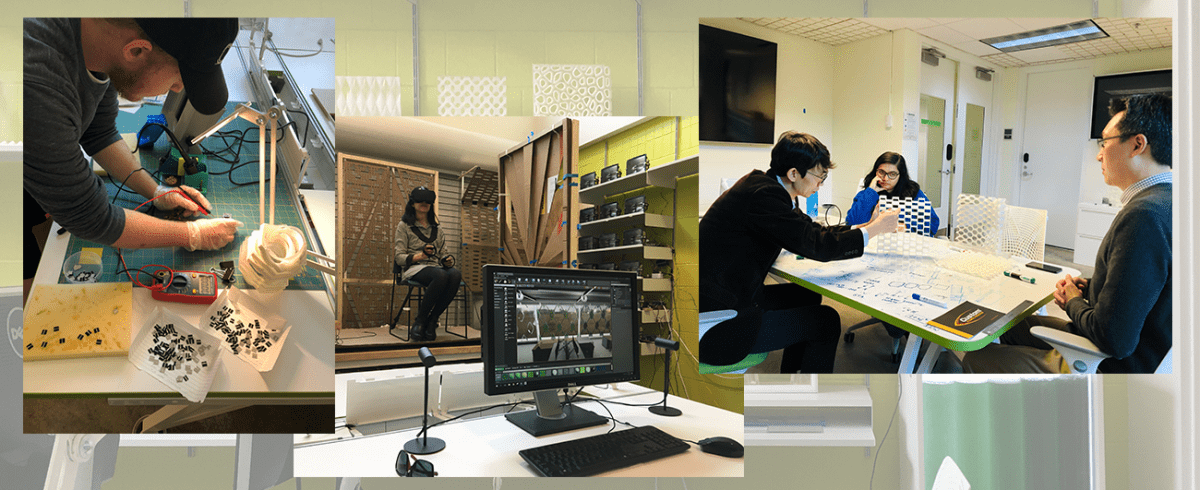
The Master of Science in Architecture (M.S.) is a graduate degree focusing on emerging research critical to the architectural profession, which requires expertise that exceeds current criteria for accredited professional degrees. This non-professional degree curriculum is made up of core requirements (research methods and interdisciplinary skills) and research-based concentration areas. Please follow the link for more information about the concentrations, the application process, and admission requirements on the graduate program information page.
Learn more about this degree →
Project EXAMPLES
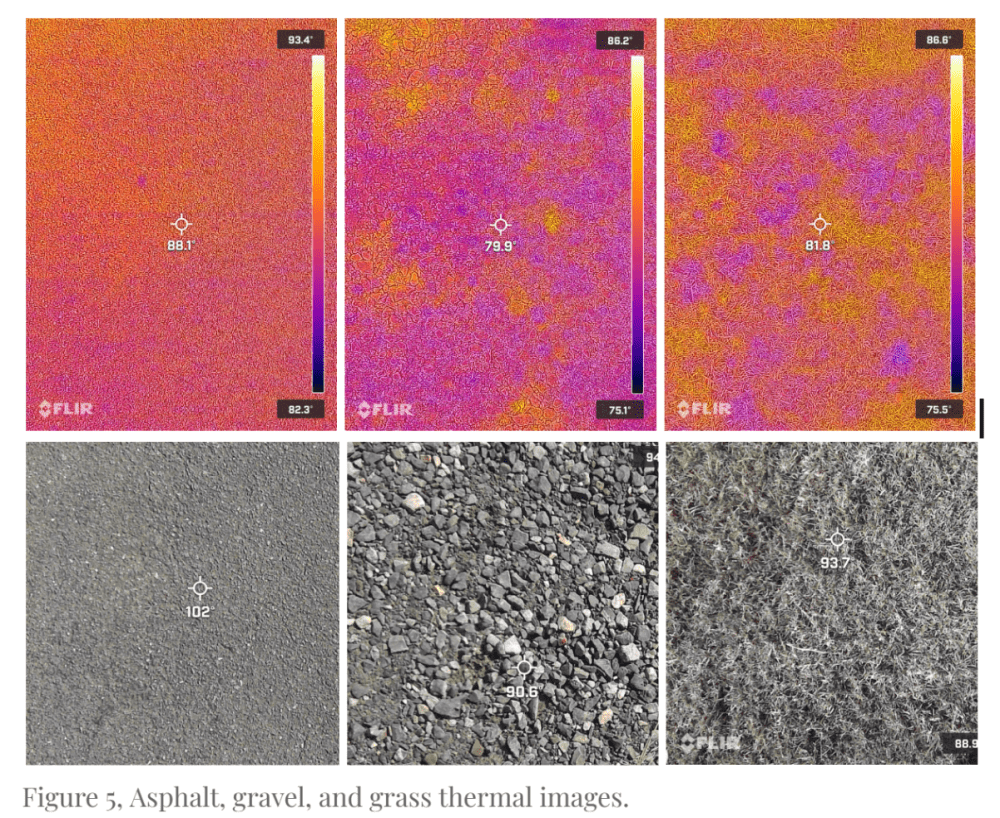
Parking Lot Materials Emissivity and Its Effect on the Urban Environment by Savannah Cherry (scherr11@charlotte.edu)
This research aims to evaluate the emissivity and thermal properties of common parking lot materials in the United States, including asphalt, gravel, and grass. The objective is to assess these materials’ thermal characteristics to support designs that help reduce their impact on urban surface and air temperatures. The study employs quantitative data, such as emissivity and albedo values, thermal scanning, and thermal imaging, to identify patterns and relationships influencing outdoor temperatures in urban environments. The primary research questions are: How much could urban temperatures in Charlotte, NC, decrease if a large asphalt and gravel lot were replaced with grass? To what extent do low albedo and high emissivity values contribute to elevated surface temperatures? Throughout the study, the grass lot consistently recorded the lowest average temperatures, both during the day and night, showing an average 11.33% reduction compared to asphalt and gravel.
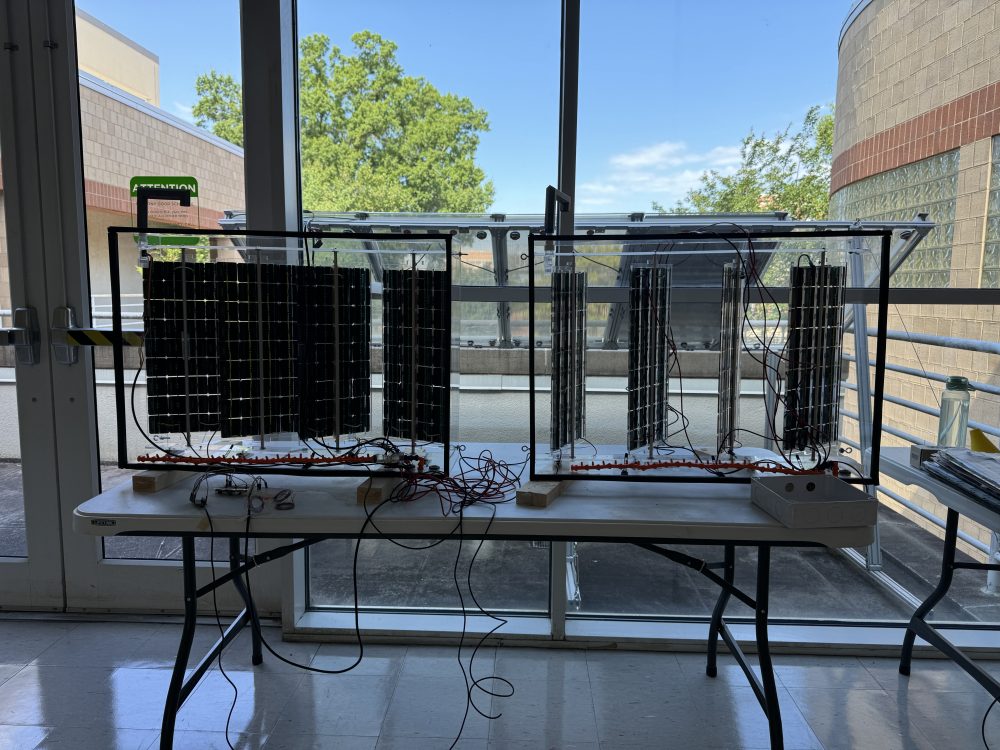
Balancing Performance and Human Experience of Building-Integrated Photovoltaics (BIPV) on Office Environments by Faith Tootle (ftootle@charlotte.edu)
While there is considerable research on the performance and aesthetics of BIPV systems, there is less focus on understanding how these systems affect the human experience. Without a deeper investigation into how BIPV installations influence office workers’ sentiments, progress in integrating these systems may be hindered. More knowledge is needed about how BIPV systems are perceived by occupants and how they might affect emotions and overall acceptance. The research will focus on two main questions: How do occupants evaluate the acceptability of view obstruction caused by BIPV? And how do they prioritize the energy efficiency benefits of BIPV against their need for natural light and views? The goal is not to find a single solution but to offer insights that can guide the future integration of BIPV systems in a way that takes both human comfort and sustainability into account.

Courtyards and Energy Modelling: Passive Design Representation by Nathan King (nking30@charlotte.edu)
This project was an investigation of the simulated impact of punctures in simple envelopes, using projected energy use as a baseline for efficacy between iterations. The overall research question concerns how courtyards can be used as part of an effective passive design solution, with a focus on how their efficacy can be proven in simulations and represented to other designers & project stakeholders. The study conducted was simple in scope, seeking to prove that entry-level usage of accessible simulation software could be effective in communicating the real-world, oft-documented benefits of microclimate control that courtyards provide for residential architecture in specific climate zones. The study as conducted, however, proved the opposite, showing that although it appeared outwardly that necessary climate data was available to prove the efficacy of certain puncture positions, the simulation calculations were seemingly not detailed enough to accurately represent the differences between different puncture positions in a consistent form.
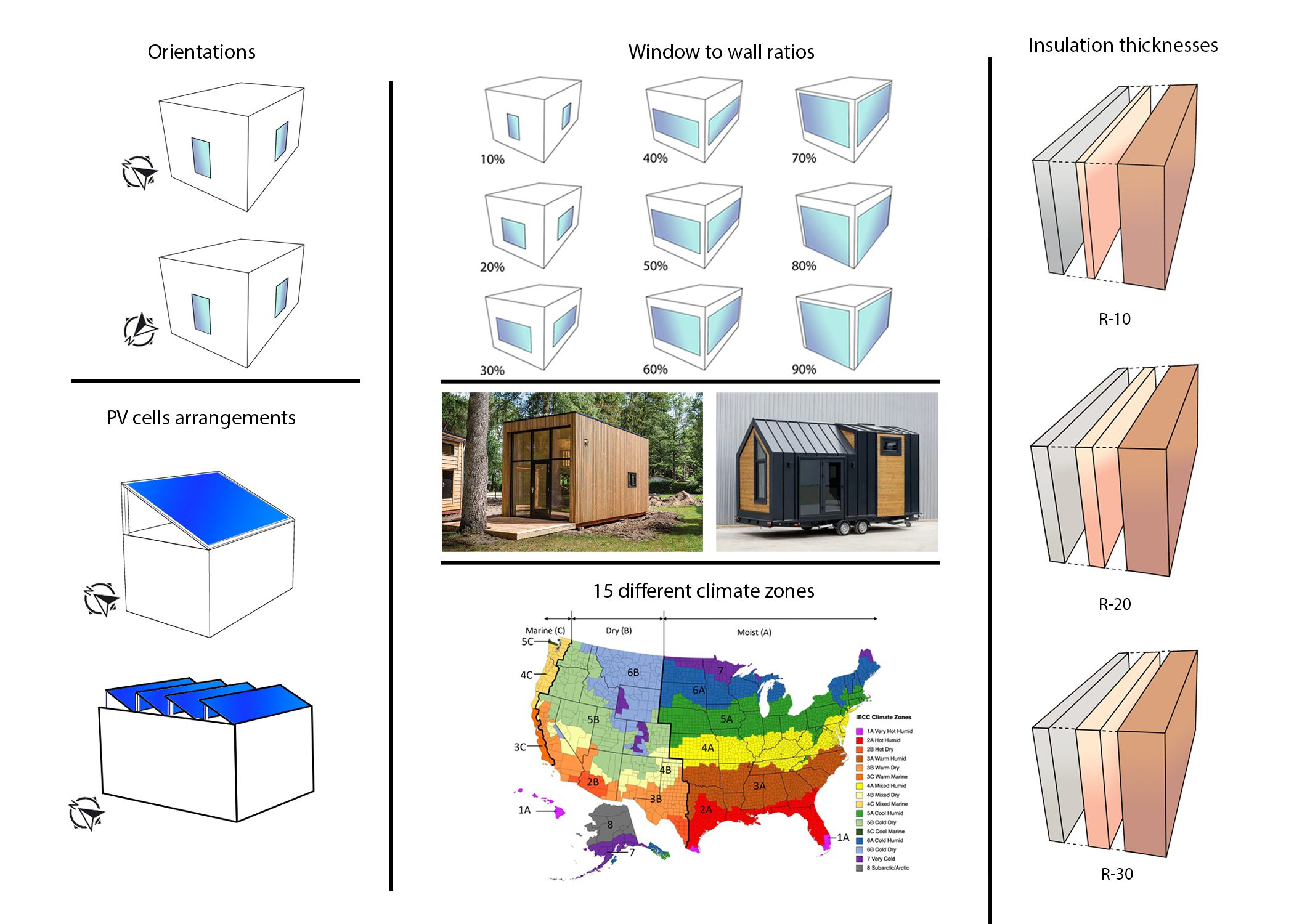
EFFECTIVE PARAMETERS ON THE PERFORMANCE OF
PHOTOVOLTAIC DOUBLE SKIN FACADE by Parham Kheirkhah Sangdeh (pkheirk1@charlotte.edu)
The adoption of tiny houses, characterized by a footprint of less than 400 ft², emerges as a compelling alternative to conventional residences, offering solutions to enhance sustainability across social, economic, and environmental dimensions. The project assesses the potential of different climate zones for achieving net-zero energy tiny houses, with emphasis placed on selecting the most densely populated city with the highest average house rent in each region. The findings aim to provide a guideline for architects and contractors in constructing net-zero energy dwellings.
Read more →
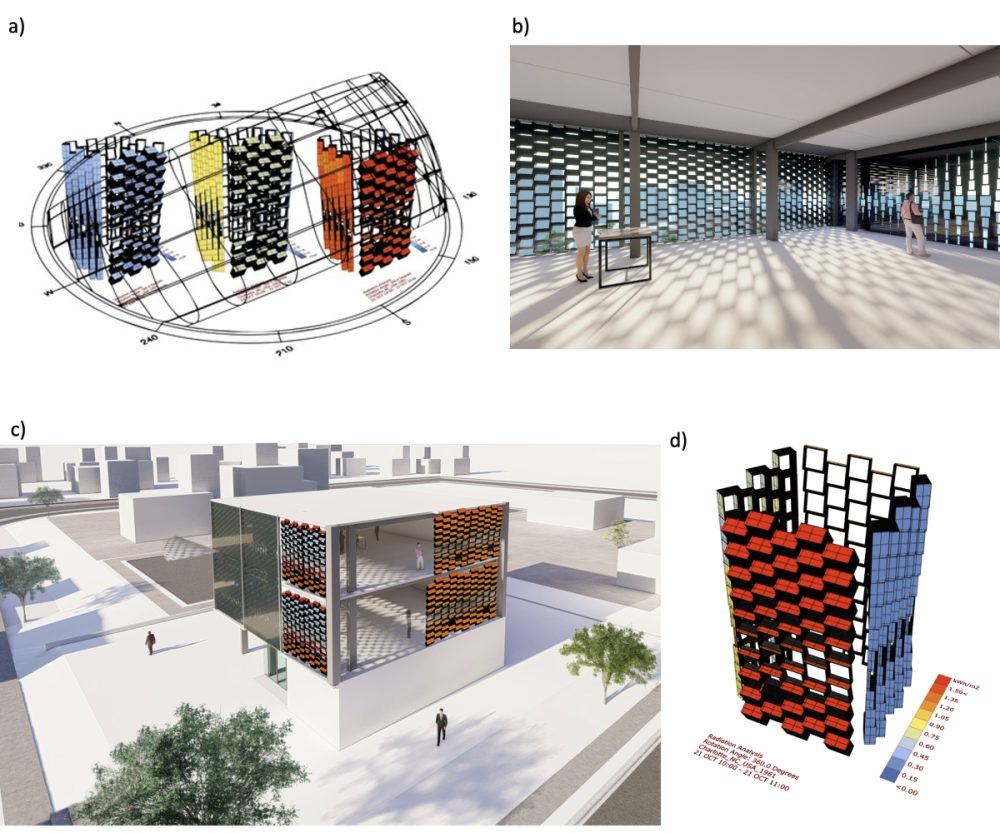
CONDITIONSCOMPUTATIONAL ANALYSIS OF POWER LOSS REDUCTION IN BIPV
SYSTEMS CONSIDERING PARTIAL SHADOW CONDITIONS by Hamideh Hossei (shossei5@charlotte.edu)
Integrating photovoltaic (PV) panels into buildings as a source of clean energy has been a widely established method to achieve net-zero energy buildings. While rooftop installed PV panels have been extensively implemented, with more urban area development and population growth, the rooftop area of high-rises will not be sufficient to meet the whole building’s electricity demand. This thesis, therefore, investigated the different BIPV’s array configurations and PV cell circuit connections to achieve higher energy yields while addressing design requirements in BIPV facade systems.
Read more →
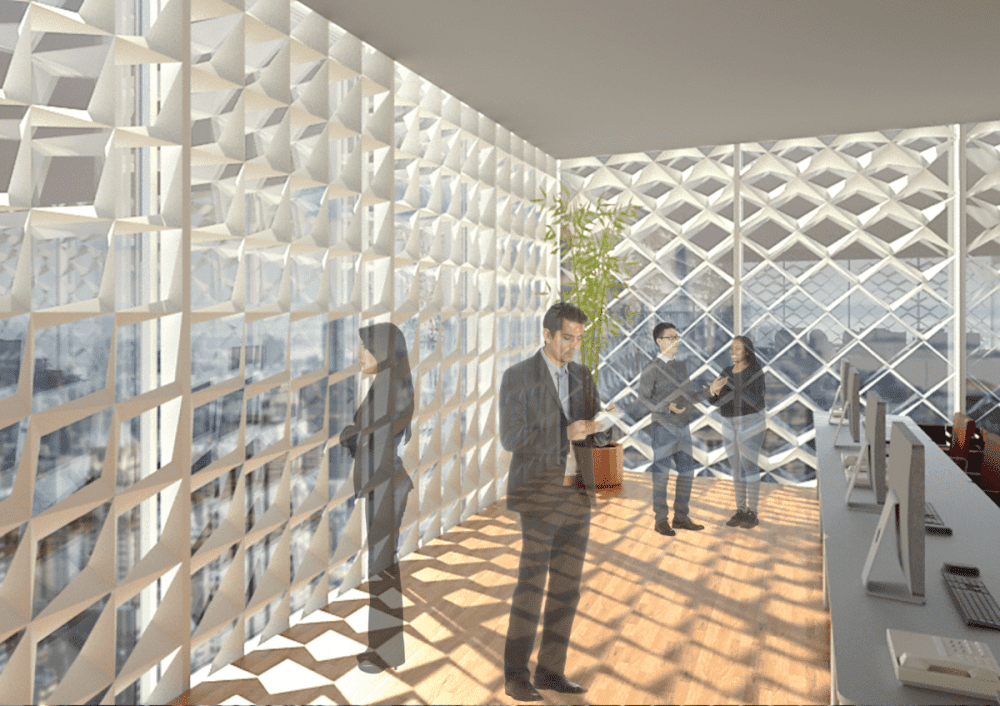
A Photocatalytic Air Cleaning System Breaking Down Volatile Organic Compounds to Improve Health and Productivity of Occupants by Ketki Parshant Bapat (kbapat@uncc.edu)
Volatile Organic Compounds (VOCs) are one of the pollutants that impact indoor air quality, leading to many adverse health effects such as Asthma, and other breathing issues. Building facade is one of the building elements that is in direct contact with sunlight and interior space. Therefore, it can serve as a prime location to implement TiO₂ photocatalytic facade and remove VOCs. The facade configuration studied in this paper was chosen as a tetrahedron geometry to increase more surface area for coating TiO₂ under a unit volume.
Read more →